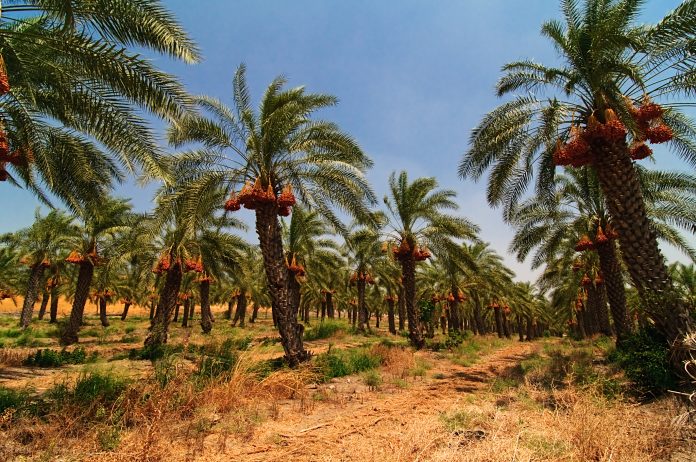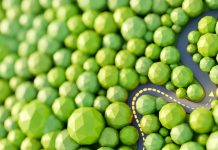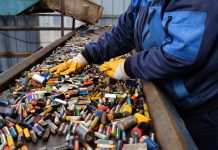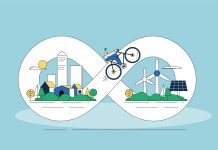Dr Zaid, Secretary-General of Khalifa International Award for Date Palm & Agricultural Innovation and Dr Sandra Piesik, Founder of 3 Ideas B.V., tells us how date palm is the secret ingredient for a bio-circular economy
We are now in a new age for sustainability. This year marks a shift in how we view sustainability and our individual actions to becoming more sustainable have been welcomed with open arms. It’s the year that the UN Decade of Ecosystem Restoration (2021-2030) has finally begun, with high profile countries and business putting the issue back on the world stage. And, as vaccines continue to be rolled out and lockdowns ease, we remain hopeful that it is the year where all countries finally emerge from COVID-19.
Focusing on the last point is vital. With the World Economic Forum branding it as ‘The Great Reset’, there is an urgent need for global stakeholders to cooperate in simultaneously managing the direct consequences of the COVID-19 crisis and shining a light on a green recovery. We can’t go back to how it used to be.
Economic growth and the fight against climate change need to go hand in hand. The key to achieving this is a bio-circular economy. Building a bio-circular economy, where everything that is extracted from nature returns to nature, will ensure that national economies and industries have the ability to rebuild in a green and more sustainable way. At the heart of this is date palm.
Returning nature to nature
Over the last twelve months, we’ve seen global economies come to a grinding halt as a result of the pandemic. With this, we’ve seen dramatic drops in CO2 levels. In 2020, global CO2 emissions dropped by 6.4%. These are positive statistics, but they’re not sustainable if we return to ‘business as usual’ once we are able to. We’ve already seen carbon dioxide levels creep back up as cars return to the roads, employees to the office and factories start functioning at full throttle once more.
As the world continues to return to normal, the traditional ‘manufacture, use and dispose’ economy must be replaced by a bio-circular model, where everything that is extracted from nature returns to nature. This will allow the global economy to rebuild, but in a sustainable way.
The date palm industry has huge potential to lead the way in this shift to a bio-circular global economy. Cultivation and preservation of date palm can have a positive global impact, across an array of industries and from both a socio-economic and environmental perspective.
Unlocking the true potential of date palm
Global date palm production is estimated at eight million tonnes annually. Owing to its health benefits, stemming from nutrients such as fibre and antioxidants, date palm is used in a variety of products around the world. As such, it is already a booming and lucrative industry. However, its true potential is yet to be realised.
Currently, the date palm industry creates a huge amount of unnecessary waste. Per tree, there is an average of 23 kilos of waste per year, which contributes to environmental pollution. This can be cut down to zero, as second-class dates can be used in consumer products such as chopped dates, date paste and date honey. Meanwhile, date palm fibre can be used to make ropes, thermal insulation and evaporative cooling equipment. Its industry-wide usage means that the waste currently created by the date palm industry can be turned into sustainable business, profit and jobs across the world.
Its impact will be felt most keenly in the MENA region, though, where 90% of date palm production takes place. Minimising and ultimately eliminating waste from the date palm industry will require skills, technology and new jobs. This will bring both wealth and investment to the region and, most importantly, to lower-income countries. In turn, this will help to tackle systemic issues such as poverty and food poverty.
This impact has already been felt in some regions, such as in Namibia. Recognising the potential of date palm, the Namibian Government started a project which ended with 75,000 date palm trees being planted, with many of these going to lower-income families. For these families, and for the country, the project helped to increase food security and generate income.
However, to make this a reality, the knowledge of local farmers and technicians had to be improved, which was done through training courses and study tours. By offering these courses, and bolstering the date palm industry in Namibia, employment levels also rose in the region. This was a long project, which took place between January 1998 and December 2016. It’s a process that could be much faster with the assistance of modern technology, though.
An example of how technology can speed up the process is in India and Myanmar. In both of these countries, there has been a dedicated effort to plant more trees to tackle deforestation. Between the two countries, there is an aim of planting one billion trees by 2030. So far, there have been 15 million trees planted. This has been done with the help of AI-powered drones which can plant 100,000 trees per day. This technology could similarly be used to plant date palm trees. This would help to bring modern technology such as AI and machine learning to these regions and create more jobs. This would also help to discourage migration away from these countries, which can lead to what’s called ‘brain drain’ in economics. This, in turn, would help lower-income countries to boost their economies.
Linking the rural with the urban
As urban populations continue to grow across the world, rural spaces are coming under increasing pressure. Within cities themselves, green spaces are becoming increasingly sparse, often being replaced by industrial buildings or housing. Meanwhile, urban areas are growing outwards and into traditionally rural areas. In too many cases, this is resulting in deforestation.
Moving forward, there must be a greater connection between rural and urban. This is particularly true given the dependency cities have on rural areas and vice versa. Therefore, as cities continue to grow, there must be greater consideration into how rural areas can be preserved and integrated into the development of urban areas. Green buildings are a great example of this. This is when new builds, such as office spaces, are built with nature infused into them. Nature can then be leveraged to create more natural heating and cooling methods, which benefits the planet and reduces costs for businesses.
Date palm oasis ecosystem emphasises the importance of linking the rural with the urban. Date palm trees can absorb huge concentrations of CO2. In fact, every tree can absorb 200 kilograms of carbon dioxide every year. That means, in the MENA region alone, the 100 million date palm trees could absorb 28.7 megatons of CO2 per year. Naturally, this will help to keep carbon dioxide levels down and turn the tide on climate change. However, they need to be preserved and protected if this is to be a continued reality.
Focusing all efforts to link rural, peri-urban and urban areas will ultimately produce new jobs with a clear aim towards protecting the planet and building out the bio-circular economy. However, this shouldn’t be solely adopted in the MENA region and needs to be rolled out internationally to achieve fundamental change. As societies continue to grow and economies slowly rebuild, there needs to be a constant link back to nature. This is the only way we can create a more sustainable, healthier and wealthier society. To accomplish this, North-South, South-South and triangular regional and international cooperation will be essential, as well as acknowledging and enacting the Agenda 2030 objectives.











